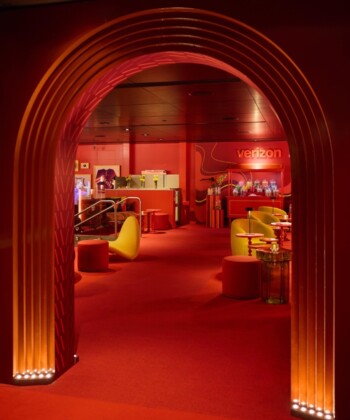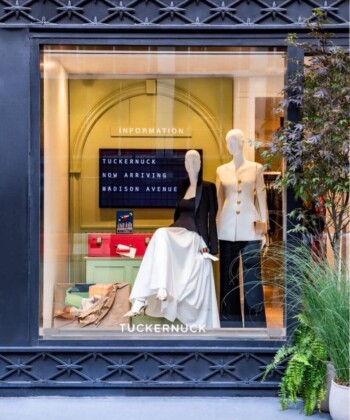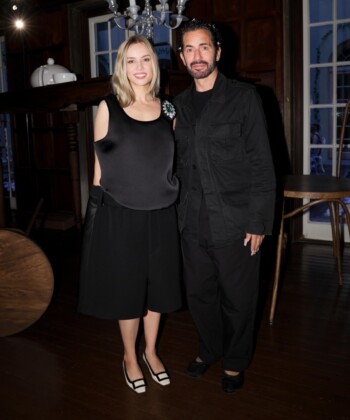At the moment, Sarah Morris is the busiest artist in New York. “I’m in the midst of putting together the ‘Rio’ show now, working on a large wall painting for a show in Germany, and I’m also working on two films, one commissioned by Bernard Arnault.” Morris sighs and laughs, “I feel like I might fall over.”
Though she may currently be expressing sentiments of overexertion, the idea of moving about between different projects and exploring different mediums is nothing new to Morris. In fact her new “Rio” series, opening November 14 at New York’s Petzel Gallery, includes both paintings and a film, both of which play off ideas of urban psychological landscapes and particularly those associated within the complicated and contradictory city of Rio de Janeiro.

Continuing Morris’ fascination with analyzing power structures through painting and film are her travels to Brazil several times over the last thirteen years, specifically the city where AK47s are just as predominant as feathered Carnival costumes. “Sitting atop one of the most beautiful places I have ever been to just outside this Favella, we were being escorted around by guys in Adidas flip-flops with machine guns,” Morris reflects. “There was this amazing and strange contradiction between the beauty and what might be behind it.”
In her “Rio” film, Morris captures these conflicts through images of the city like the Mayor’s office, a dance party in the City of God, talk show host Regina Casé on a visit to a favela and the largest assembly line in South America at the Brahma beer factory. The end of the film presents viewers with a look at what are considered some of Brazil’s most striking and familiar images of Carnival. Through her lens, we see traces of events in Rio involving communism, architecture and industry as they have unfolded throughout the twentieth century.

“Placing myself in these types of situations is sort of the modus operandi of the films,” Morris explains. “By placing myself in those situations, I am able to think about the psychology of space in a very different way than if I hadn’t placed myself there, as in painting in my studio.” Morris also notes that her paintings and films, especially in the case of the “Rio” series, are very dependent upon one another though they are completely different experiences. Unlike many artists today, Morris chooses to be a bit all over the place and not just focus on one form of artistic expression. She points out that, “this idea of engagement is usually something that is frowned upon in the art world because somehow if you are engaged, you’ve lost your criticality.” She adds, “to me, it’s the last taboo in the art community and while it’s almost gone, it’s still living in some capacity.”
With “Rio” Morris is expressing her constant desire to dispel that last taboo, to learn and grow from each of her shows and projects and live, uninhibited, in those contradictory worlds that intrigue her. Both “Rio” and her career as an artist thus far are, in her own words, “very strange and beautiful concoctions.”

MORE:
Through the Lens of Corinne Day
How Victor Skrebneski Sees It
Craig McDean’s Dream Girls









































